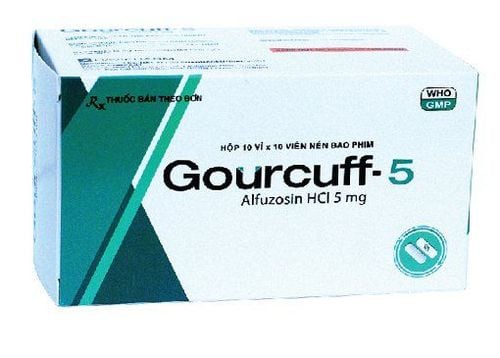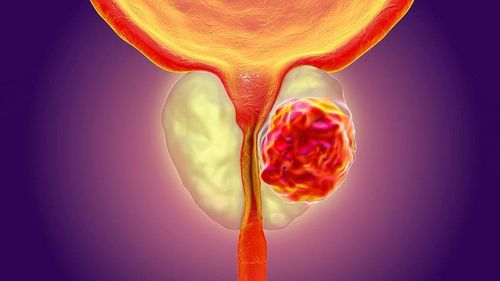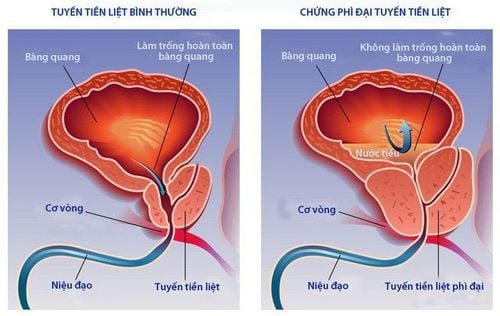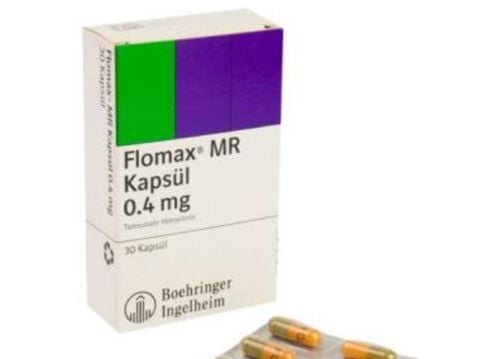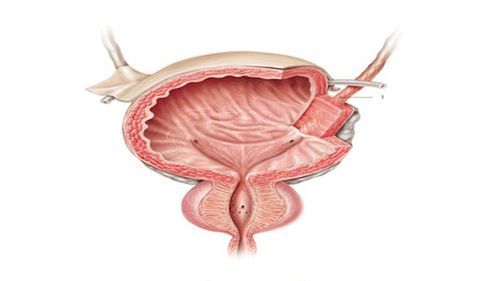This is an automatically translated article.
The article is expertly consulted by MSc Tran Thanh Hung - Department of General Surgery, Vinmec Ha Long International General Hospital.Prostate enlargement is a common but troublesome disease for men, especially after 50 years of age. With the new method of endoscopic laser evaporation, the treatment of prostate enlargement will no longer be a burden.
1. What is an enlarged prostate gland?
Prostate enlargement, also known as benign prostatic hypertrophy, is a disease caused by an increase in the size of the prostate gland in men. The disease narrows and obstructs the urethral lumen, which often changes slowly, so sometimes patients are subjective or do not pay attention. However, the tumor will gradually enlarge, if left for a long time, it will cause many dangerous complications for the kidneys, bladder and urinary system.Prostate enlargement, if detected early when the tumor is small, the treatment will be economical, effective and with fewer complications for the patient.
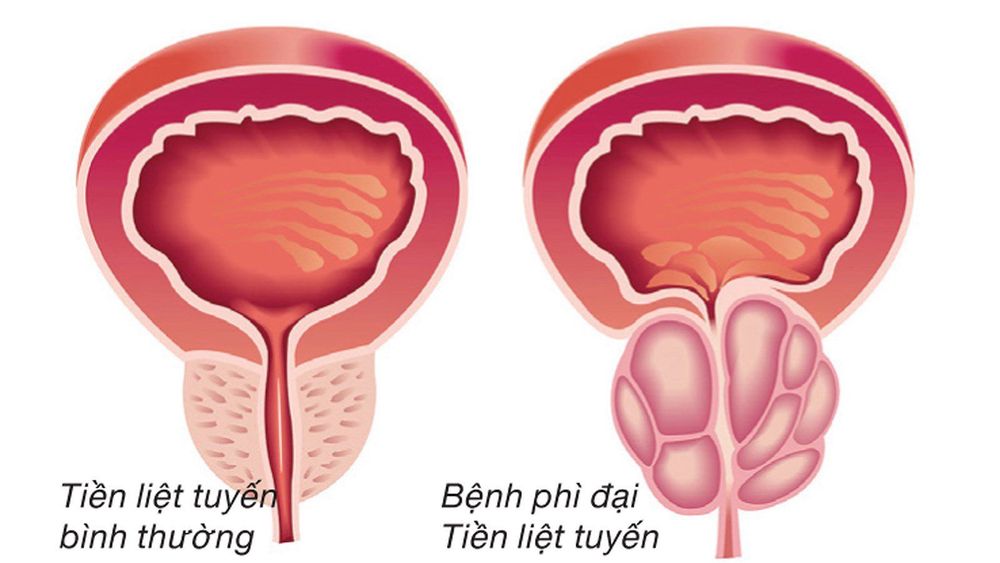
2. Treatment of prostate enlargement by medical or surgical?
After examining, if disease is detected, the doctor will prescribe different treatment depending on the disease condition.If the condition is mild, the tumor is small, the doctor may prescribe medical treatment with drugs and monitor the progress of the disease for about 6 months to 1 year for urinary problems.
Once the tumor is large, medical treatment does not respond, the treatment of prostate enlargement may be indicated by surgery.
At Vinmec International General Hospital, there are many methods to treat prostate enlargement such as: Treatment of prostate enlargement with Bipolar knife; ️ Robotic prostate cancer surgery; Endoscopic laser vaporization of the prostate gland; Biopsy detects prostate cancer by a special method, shortens the time and increases biopsy efficiency....
In which, endoscopic laser vaporization of the prostate is a new technique applied in the background. prostatectomy procedure through ureteroscopy with bipolar knife has been implemented by Vinmec since 2018.
3. Learn endoscopic laser vaporization of the prostate gland
3.1. Indications and contraindications

Indications
Patients with complete urinary retention, even after urethral catheterization. Incomplete urinary retention with residual urine after urinating, failed internal therapy Recurrent hematuria due to benign prostatic hypertrophy Bladder diverticulum, bladder stones due to prostatic hypertrophy Infection Recurrence of urinary tract Enlargement of the prostate gland affects health, sleep or interferes with work. Contraindications
Patients with urethral stricture (the endoscope cannot be inserted) Stiff hip (cannot lie down in the obstetric position) Coagulation disorders Have serious or ongoing medical disease (cardiovascular, respiratory .. .) People with mental disorders (relatively).
3.2. Advantages of laser ablation surgery for prostatic hypertrophy
Patient has no incision, has good psychological and aesthetic feeling
Post-surgery is gentle due to less pain, quick to regain movement, so complications due to long bed time, short hospital stay, and illness can be avoided.
The technique is similar to transurethral ablation of the prostate gland, safe because the risk of bleeding and perforation is very low, the cost is low, because there is almost no need for constant washing. Postoperative procedure
Using isotonic saline solution as an alternative to hypotonic solution, eliminating the risk of endoscopic syndrome.
No electric current flows through the patient's body, reducing the risk of electrical burns, urethral stricture or bladder neck fibrosis after surgery
Good hemostasis, reduced urinary flow and short hospital stay
Use of sodium chloride solution 0 .9% has no ions (Glycine or Mannitol) so you don't have to worry about passively absorbing hypotonic fluids electrical burn injury at the contact site with the electrode plate, reducing the danger for patients with pacemakers.
3.3. Implementation process (steps to perform)
Step 1: Dilate the urethra with Benique Step 2: Place the device in the bladder Step 3: Conduct evaporative laser ablation Step 4: Remove the device, insert the urethral catheter.

3.4. Normal expression after surgery/engineering
Manifestation 1: The patient has little pain after surgery, can walk on the 1st day after surgery Manifestation 2: Withdrawal of urinary catheter in 24 hours Manifestation 3: Average hospital stay 3 days Post-operative manifestations The surgery is abnormal and requires immediate re-examination
Manifestation 1: Hematuria Manifestation 2: Urinary disturbances such as difficulty urinating, urinary leakage Manifestation 3: Fever Showing evaporative laser endoscopic technique is deployed in hospitals Hospital under Vinmec Health System. The C-Arm system, the intraoperative ultrasound machine helps to clearly locate the position and size of the stone to help the surgeon monitor the condition of the stone during and after surgery, limiting complications during and after surgery.
The most modern Hybrid operating room in the world, integrating the operating room and advanced imaging facilities (CT scan, MRI, ultrasound...) helps to reduce surgery time and bring effective surgery. best technique for the patient.
In general anesthesia, Vinmec adheres to anesthesia protocols, anesthesia safety guidelines, anesthesia checklists for 100% of surgeries to minimize incidents and unwanted effects. In addition, patients receive comprehensive care, meals, rest, exercise, thoughtful health education, comfortable rooms, and confidential patient information.
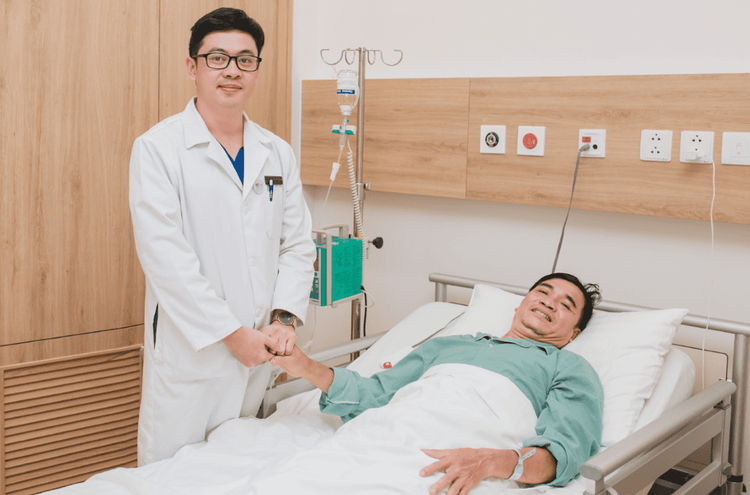
Please dial HOTLINE for more information or register for an appointment HERE. Download MyVinmec app to make appointments faster and to manage your bookings easily.





